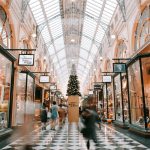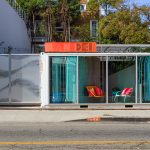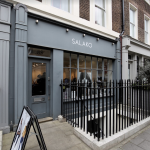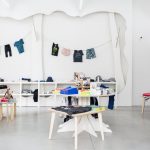For online brands and brick-and-mortar retailers alike, pop-ups offer an opportunity to create unique experiences in this increasingly competitive landscape.
Those unique experiences can become the foundation for creating a long-lasting community of loyal customers. The stronger your community, the more your customers are willing to spend — and spread the word.
How can something as temporary as a pop-up create a lasting community? It comes down to transparency, providing value, and understanding your community members.
The Value of Community
Community might sound like a pie-in-the-sky idea, but it’s essential for brands. Establishing a community can build trust with your audience, and that’s powerful. Brand trust is extremely important to consumers. When they trust your brand, they’ll continue to purchase from you. Customer retention is extremely valuable and cost-effective; it can be as much as 25 times less expensive than acquiring a new customer.
When you establish a community of loyal customers, they’ll also share your message with others, further growing your customer base. Don’t underestimate the power of those recommendations — 92% of consumers trust them.
Establishing a community not only builds trust and referrals, but it also nurtures the relationship. Cycle apparel brand Rapha strengthens their existing community of online and offline customers with pop-up shops. With an online store, headquarters in London and brick-and-mortar stores across the globe, they’ve also found the value in pop-up shops.
Rapha’s pop-ups — dubbed Mobile Cycle Clubs — allow them to expand their global reach. Although they’re located across multiple continents and countries, they’re not everywhere. Having pop-ups in other cities allows them to engage more members of their already -established community.
https://www.instagram.com/p/BcNG0Nzh74D/?taken-by=rapha
Rapha has established a strong community of cycling enthusiasts with experiential stores — like think in-store cafes, workshops and events — and organized group rides. In fact, some customers opt to pay to be a part of Rapha’s exclusive community of customers, gaining access to perks and additional events.
Build and Nurture Your Community
When building your new community of customers, a great place to start is by identifying who your target community member is. That way, you’ll be better equipped to find ways to provide value to your community.
If you want customers to be enthusiastic about the community, you’ll need to prioritize their needs and be transparent. Remember, building community is about building connections, not about making sales. The sales will come organically.
Online brands can start to build community online, and then translate that to real-life experiences with pop-ups and events. Or, you can take note from Fine Goods Market in Austin, Texas. Rather than establishing their own online community, they tapped into the online communities of other brands.
Fine Goods Market is a bi-annual pop-up event “showcasing all local designers, vintage curators and handmade makers.” Though these artisans are local to Austin, they’ve built their businesses online. The community-driven event has not only tapped into existing communities, but also connected those communities over a shared interest in supporting local entrepreneurs.
Host Events
Hosting in-store events builds customer loyalty, but events aren’t possible if you only have a digital space. Pop-ups can offer the physical space needed to host events that can build buzz and a strong community.
Another furniture and home goods retailer leveraging the opportunity of pop-ups, The Land of Nod embarked on a pop-up event series that traveled across the country. The Nod Tour Bus made several stops across the U.S., bringing games, giveaways and entertainment with it.
The community aspect? The entire series was aimed at creating a unique space for families to come and create memories. The Land of Nod has successfully ingrained itself into these special bonding experiences that customers will remember for years to come.
When brands create such value, a community of loyal customers will follow. The serialization also strengthened the community, connecting families across the country through a shared experience.
Find Community-Driven Partners
Tapping into brands and resources that already have communities can help you become a part of the community, and create a “sub-community” of your own. One way to do this is to organize a multi-seller pop-up shop, allowing you and your collaborators to manifest a space where your communities can come together.
When finding partners, consider what their approach to community is, and how it fits in with your brand experience. Activewear brand Outdoor Voices is a serial brand partner — they actively open fitness pop-up events in collaboration with other fitness brands. Instead of pocketing the proceeds, money goes to charitable causes.
But the Outdoor Voices community isn’t built solely on philanthropy. They’ve cultivated an outdoor- and fitness-minded community of loyal customers by providing a real-life experience to supplement the otherwise online-only brand. They strategically open pop-ups in locations where their most active target customer base is, allowing customers to experience the product and brand before purchasing. Each pop-up also has its own set of exclusive, local merchandise.
Leverage Influencers
Influencers can also be community-minded partners. Much like Fine Goods Market has tapped into existing communities with their pop-up, partnering with influencers offers a similar opportunity. Whether it’s a local community figure or an Instagram star with a robust following, influencers have one thing in common: an established, loyal community of followers.
Furniture and home goods retailer West Elm taps into influencers for its pop-up events. Influencers curate a selection of local goods, and the pop-ups also have meet-and-greets with influencers and local sellers, plus refreshments. Tapping into established communities, plus a push for supporting local businesses, has helped the large retailer join the community and cultivate it to be their own.
https://www.instagram.com/p/BQZ_fnyDiiN/?hl=en&tagged=westelmpopup
Get Behind a Cause
Non-profit organizations can make great partners, too. Brands have seen the benefits of corporate social responsibility, especially as consumers are considering more than price point when making purchase decisions.
Supporting a cause doesn’t just help you build community — it also means you can charge a premium. Fifty-five percent of online shoppers will pay more for products and services if the brand is committed to corporate social responsibility, and 88% are more loyal.
Determining the cause to support is a mix of looking at your brand story and mission and the passions of your customers. If you’re an outdoor retailer, it might make sense to go green —
66% of global consumers prefer to spend money with a sustainable brand. REI and Patagonia are two prime examples of such.
You don’t have to partner with a charity or an organization to support a cause, though. Brit + Co’s #CreateGood pop-up focused on empowering women, an issue that has cultivated community on its own (and is extremely relevant in today’s landscape). Cape Town’s the Street Store aimed to contribute to the poverty issues in the area. And there are tons more examples of other brands that have open pop-ups in support of a cause.
Think Local
The push towards supporting local businesses has grown. Small Business Saturday is now a major retail staple, and 82% of consumers actively support local businesses. Supporting local communities can help you establish a community of your own.
But supporting local communities doesn’t mean you have to support local business owners. It also means you can plug into local communities based on lifestyle.
KITH saw opportunity in Aspen, Colorado — a place where the outdoors meets luxury. The street gear retailer opened an experiential pop-up shop in the picturesque mountain town. Injecting themselves into the community, KITH actively shared the experience on Instagram and Snapchat for customers who couldn’t physically attend.
https://www.instagram.com/p/BODSkQUjZ21/
At the pop-up, KITH understood that focusing not only on the practicality of their product and how it fits into the community of active consumers, but also the luxurious and fashionable tastes of their audience. Champagne was served, and every product on display was stylish and fashion-forward.
Turning the tables: Are you a property owner? Show your support for the local community by renting out vacant space and help stimulate the local economy.
- London-Based Lifestyle Brand Mantidy Launches Pop Up in Marylebone - November 13, 2019
- Fashion Retailer SHEIN Opens Dallas Pop-Up Shop With Storefront - November 11, 2019
- Howard Johnson popped-up with a candy-themed store in NYC to support brand refresh - September 13, 2019





